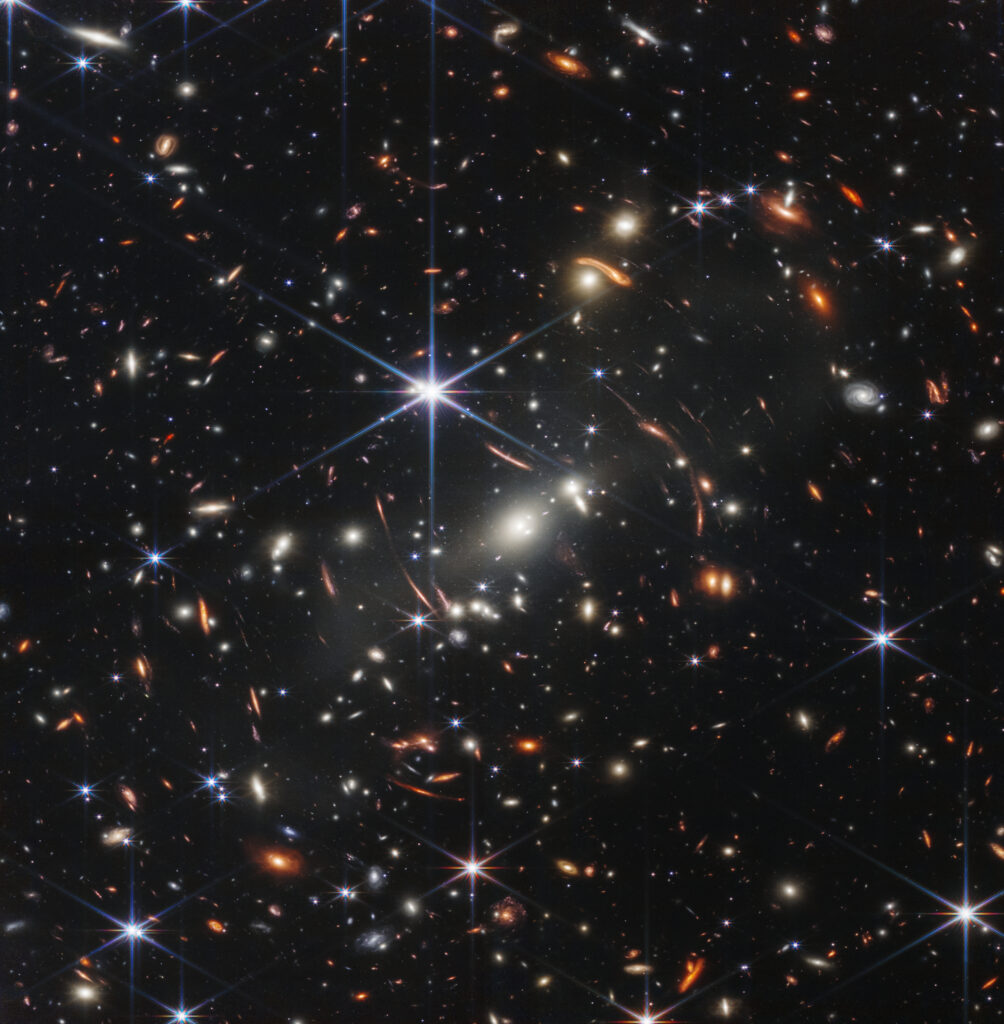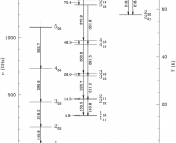Title: Red Spiral Galaxies in the Cosmic Noon Unveiled in the First JWST Image
Authors: Yoshinobu Fudamoto, Akio K. Inoue, Yuma Sugahara
First Author’s Institution: Waseda Research Institute for Science and Engineering, Waseda University, Tokyo, Japan
Status: Submitted to ApJ

Source: NASA / JWST
Blues and Reds
Spirals are young and blue, ellipticals are old and red.
When it comes to galaxies, this is probably one of the most fundamental and simplest facts taught right at the beginning of any course or lecture about them.
Contrary to how it was first believed galaxies evolved, we now know that mostly, galaxies are born as blue, star forming spirals and once they collide with one another, they become elliptical in shape, are stripped of their gas, and stop star formation because of that stripping. Hence, as the stars age, no new stars are born and the galaxy adopts the red tone of its old stellar population, becoming what is known as “red and dead” in astronomy.
However, there are such things as red spirals out there. They are incredibly rare, though. According to today’s paper, only around 2% of all galaxies in the local Universe are red spirals.
A Better Look
The authors of today’s paper have taken a closer look at three red spirals, freshly observed by the magnificent James Webb Space Telescope (JWST). In fact, the three spirals are actually a part of the very first image released from Webb: SMACS J0723.3-7327.
JWST was not the first to discover these galaxies, however due to its great angular resolution, their spiral morphology has been revealed now for the first time (see Fig. 1).
Source: Figure 2 in today’s paper
Why is galaxy morphology so important? Well, it offers insight into the formation mechanism of galaxies, when observed across cosmic time. Especially the question of when and where galaxy morphology emerged in the early Universe is still under a lot of investigation.
Red and (almost?) Dead
The reasons behind the redness of these observed spirals may be the dominant stellar ages within them, dust reddening or a combination of both. Because JWST observed these galaxies in the near infrared wavelength regime, their redness may indicate that they are at rather high redshifts.
Finding and observing spiral galaxies from the early Universe is a very important step in understanding how they first emerged.
In order to learn more about the properties of these galaxies, the authors employed so-called Spectral Energy Distribution (SED) fitting, where energy is plotted against the wavelength of the captured light. This fit reveals many things about the stellar age, star formation rates (SFRs), mass of the galaxies and their respective redshifts.
The authors of today’s papers found that one of these red spiral galaxies from the SMACS image observed by the JWST, called SR14, is one of the highest redshift spiral galaxies identified so far, at z=2.463, which means the light has been traveling towards us for over 10 billion years! All three galaxies are likely to have redshifts between 1 and 3, which is the time known as the “Cosmic Noon” (which started after the Cosmic Dawn, the time from around 50 million years to one billion years after the Big Bang when the first structures began forming).
The authors also found that the stellar population of all three galaxies appears to be old and the galaxies almost entirely passive, meaning they no longer form stars (except for SR14, which does show some signs of younger, blue clumps of stars visible in ultraviolet light). The fact that all these rather rare “red and dead” spiral galaxies were found in just one image is rather surprising, since they are very rare in the local Universe.
The authors do note that the structural properties of these red spirals are not very well studied yet and there could be, for example, much more dust than expected within them, causing dust reddening and obscuring star formation bursts. There is no doubt, this intriguing galaxy type must be studied further to learn more.
JWST opened the possibilities to study these very interesting objects properly for the first time. It will grant us a better understanding of how galaxies first formed and evolved, and thus all structure in the Universe.
And after all, let’s not forget, this is only the beginning of JWST’s work!
Image Credit: NASA, Today’s Paper
Astrobite edited by Ali Crisp




